Astronomical Imaging – The Moon
Astronomical Imaging – The Moon
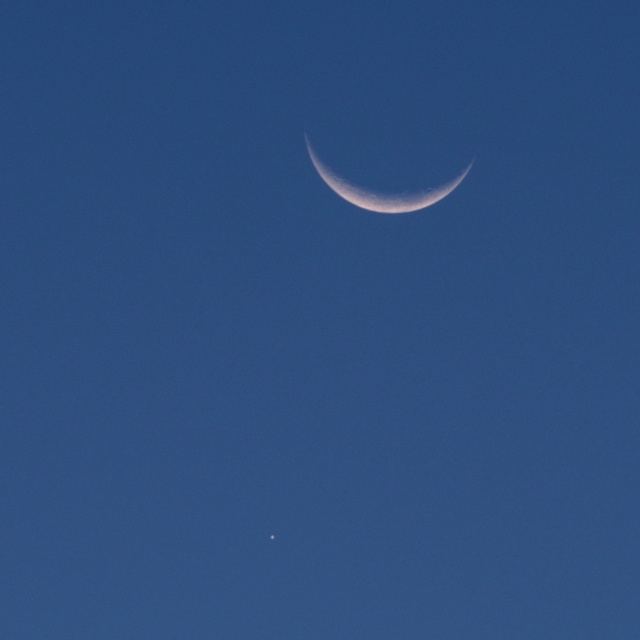
One of the easiest objects to photograph in the night sky is the moon. The moon is bright enough and large enough that it is possible to take good photo’s with minimal equipment. The moon is barely a ¼ of the diameter the earth at 3470km (which is about the size of the United States) but is sufficiently close that details down to less than 20km are easy to photograph with a normal camera and an inexpensive telephoto lens. The image above was made with an Olympus OMD EM5 equipped with a 200mm f4 SMC lens from a on old film camera and shows a crescent moon with the planet Venus near the bottom.
Imaging the moon with a basic camera setup
The above image was obtained with a 200mm telephoto lens mounted on an Olympus OMD EM5 camera. There was a bit of work to get to this amount of detail, required stacking images (I’ll probably cover that technique in a later article) to improve quality. Note for example the prominent crater Tycho towards the top of the moon.
Many “Point and Shoot” camera’s possess a built in zoom lens capable of very good images – perhaps better than the one above. However, I still prefer an interchangeable lens camera since it has more options for optics. I particularly like my Olympus OMD EM5 Micro Four Thirds (MFT) mirrorless camera because it can be attached to almost any lens from any maker (with the right mechanical adapter) and has an excellent live focus screen. The picture below shows how I adapted a 200mm SMC lens to my Olympus camera using a Fotodiox MFT to M42 adapter.

One tip to consider is that new lenses can be very expensive, in the order of $500-1000 or much more, yet good quality older manual focus lenses can work just as well for a fraction of the price (sometimes free as I found friends and family have a tendency to give me all their old camera gear!). With a manual lens you will lose the ability to autofocus, but this is not a major problem since using live view and the manual focus ring is quite a easy process. The money saved can go towards purchasing a solid tripod to mount the camera on, and a remote trigger for the camera (which means you can take an image without causing camera shake). However, always check that the camera and lens combination can reach infinity with an adapter, sometimes it is not possible.
Attaching a Camera to a Telescope
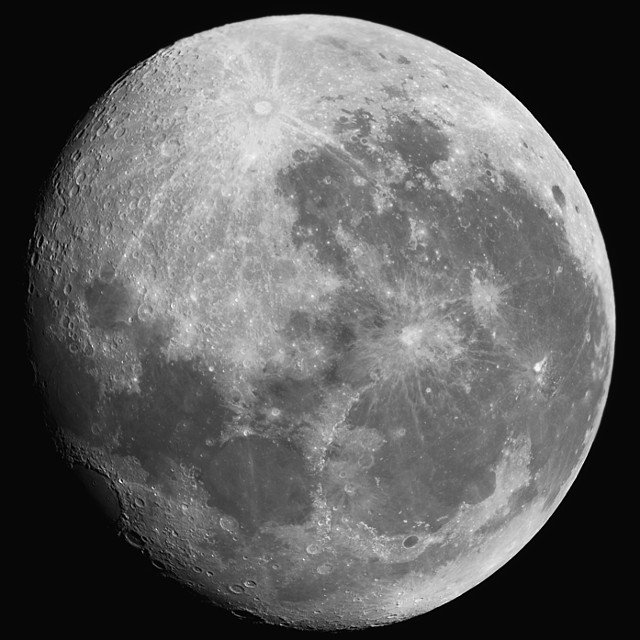
Viewing or imaging the moon in a telescope is almost breathtaking, even in the smallest telescope. The above image at a focal length of 700mm shows what sort of result can be expected with a long telephoto or small telescope using a digital camera. Compare the image made earlier in the article at 200mm.
When attaching to a telescope it is necessary to use either a T-Adapter (Prime focus) or a eyepiece projection mount. Better results are usually obtained with a T-Adapter setup, however if using a fixed lens type camera, such as a smart phone then an eyepiece projection mount is the only option. A telescope capable of tracking the moon and stars is also highly recommended, and will improve images and viewing comfort – but it’s still possible to get good images without it.
Here is a typical T-Mount arrangement for a telescope attaching to a camera with an interchangeable lens. Some telescopes have a T-thread built into the focuser, so you only need the camera to T-Adapter.
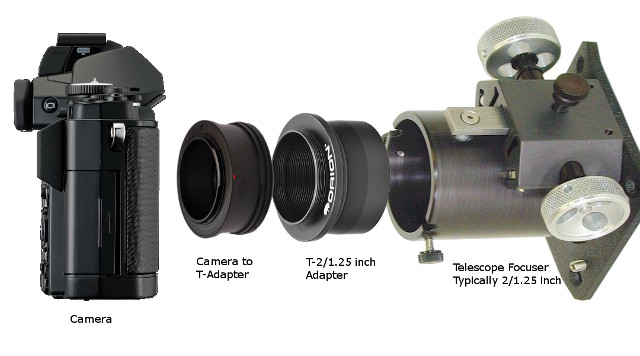
If using a Smart phone, you will need to use eyepiece projection in which the camera is placed at the telescopes eyepiece, just as if you were viewing with your own eyes. Here is an example of such a setup (this one is from Orion, but I have seen people make them using a smartphone case, or even 3D print them).
Interesting Features on the moon
The moon has a large range of interesting volcanic and impact type features. Here is a selection of images that showcase some of the moons more interesting areas, all made with a Celestron C14. If you want to see some truly remarkable amateur images of the moon, please check out Robert Reeves work (link given in the references).
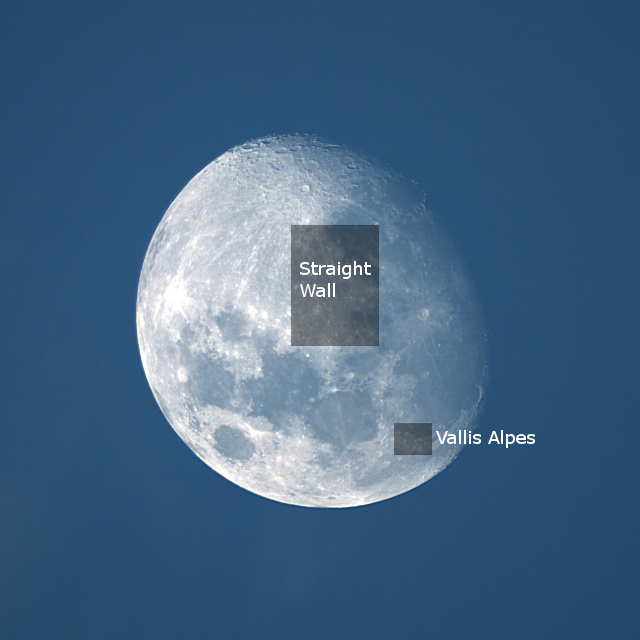
My favorite region is near the middle of the moon, and indicated by the region marked Straight Wall” in the image above. This region is shown in much greater detail in the image below. ‘Straight Wall”- properly known as Rupes Recta refers to the linear slippage visible at the top of the following image. It measures 110km long and 200-300 metres high. I’ve bumped up color saturation to show the subtle color differences more clearly, just a preference thing.
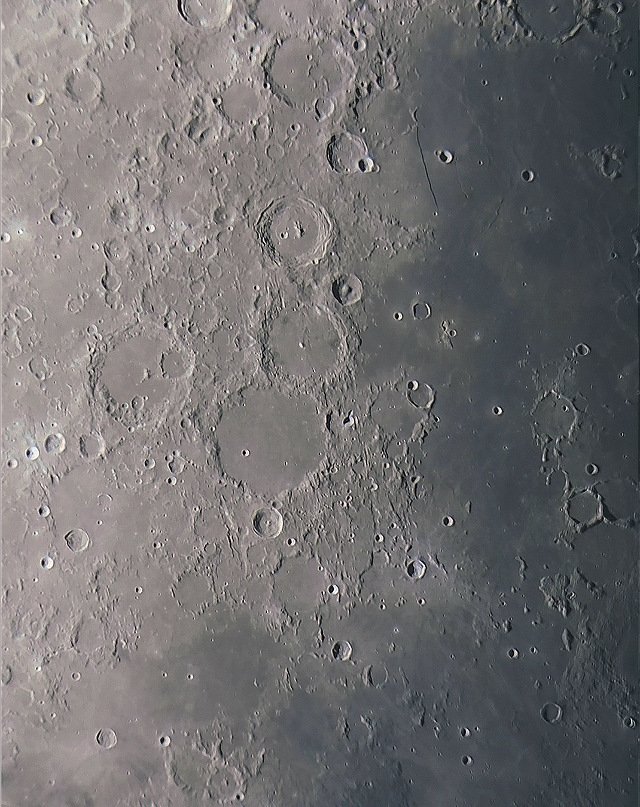
This next feature, imaged below, is Vallis Alpes, a 166km long flat floored graben (caused by the surrounding area being pulled apart, and allowing the valley to sink). The valley appears to be filled with lava, however, when the atmosphere is very steady it is possible to see a small crack running through the middle of the valley (not visible here).
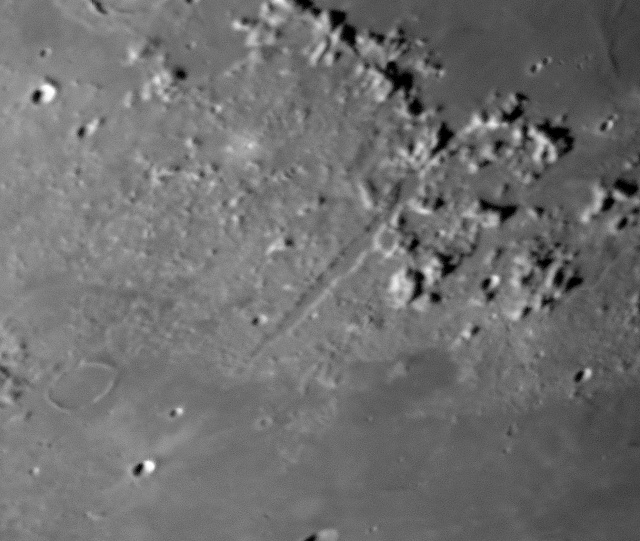
This final image shows the limb of the moon, I think it is interesting because it shows the topographic relief of the moon very well. You can see the edge or horizon is peppered by mountains.
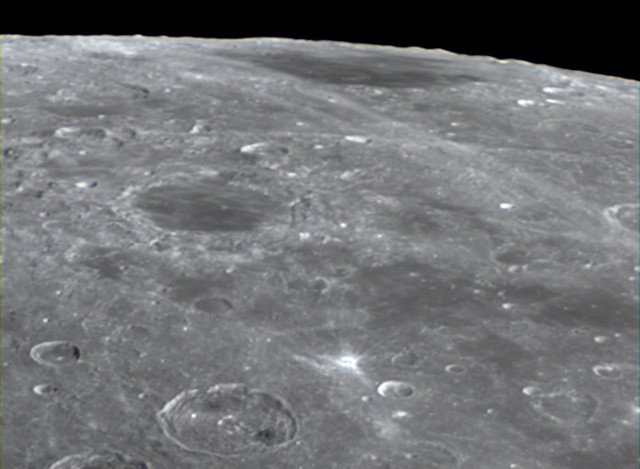
Interesting Moon phenomena
There are a few fascinating transient phenomena that occur with the moon including not only eclipses and occultations of planets/stars but also impacts(!) I won’t cover impacts as they are not an easy event to capture, but what I will cover is occultations and eclipses.
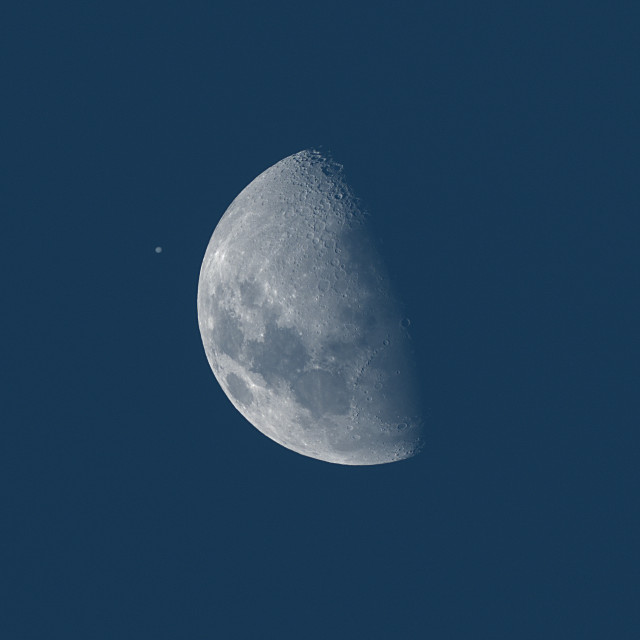
A lunar occultation occurs when the moon passes in front of star or planet. The image above shows the moon and Jupiter together (in the daytime) on June 16, 2005. About 30 minutes later the moon passed in front of Jupiter. It was captured with a focal length of 530mm and a Canon 300D camera.
What is interesting is how small Jupiter appears in comparison, but Jupiter’s true diameter is 40 times larger! Stars are interesting to watch in occultation as they wink instantly in and out view. This because stars are extremely distant, and appear so vanishing small it takes almost no time for them to be covered and uncovered. To get an idea of how small image if you were observing an occultation of a star like Spica, which is a large bright blue star that is sometimes occulted by the moon, and you kept increasing magnification until you could resolve Spica’s surface the magnification would be so high that you would be able to see a shoe on the surface of the moon.
The next interesting phenomena is the Lunar Eclipse, of which there several types including penumbral, partial and Total Lunar Eclipse. The Total Lunar Eclipse is the most exciting for the casual observer. Here is an image of recent total lunar eclipse made on August 2014, using a 200mm lens and Olympus OMD with a 15 second exposure. The next Total Lunar Eclipse is visible at the end of this month for viewers in much of Australia, New Zealand, China, Russia and Some of North America.
Total Eclipses are a wonderful visual event, particularly away from the city, as the sky steadily darkens from the full moon and the area in shadow on the moon takes on an ethereal orange color. It really is an unworldly sight, and a must see for everyone. When the moon is in its total phase is floats like a glowing orange disk against a dark star studded sky (assuming you are well away from the city). The color is caused from sunlight being refracted by the earth’s atmosphere even though the sun is directly blocked.
Getting images of an eclipsed moon is a bit hard because longer exposures are necessary to capture the much dimmer moon. Unless a tracking platform is used, it will necessary to use wider angle lenses and higher ISO settings to capture the detail of eclipse well. If you attempt to use a long telephoto lens you may find that the motion of the moon, from the earth’s rotation will blur the moon. As a guide for a 100mm lens, exposures should be no more than 2 seconds, and for a 200mm lens no more than 1 second.
The final event, is the most remarkable astronomical event of the all, the Total Solar Eclipse. Technically, this is a solar eclipse, but of course the moon is required to block the sun. The subject of Total Solar Eclipses are worth of their own study, so will just briefly say that if you ever have the chance to see one - please do! Sadly, I don’t have any good images of a total solar eclipse taken by myself, but the one below was a video screen capture taken in November 2012. It rained only moments after this frame was captured!
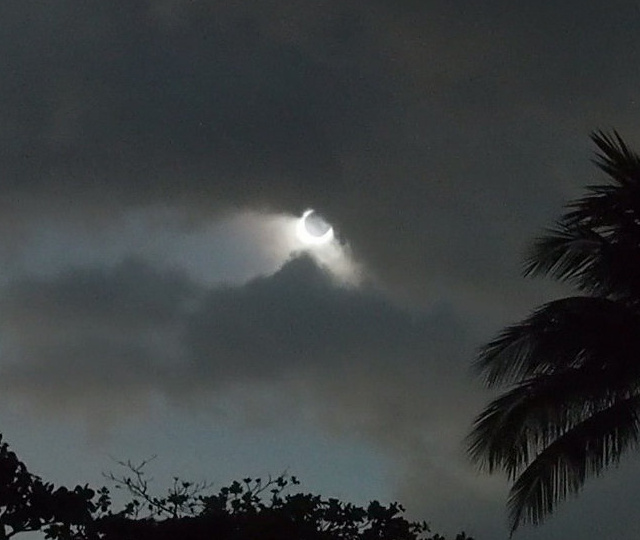
Conclusions
I hope readers enjoy this article as much as I enjoyed writing it. With the moon there is so much to learn, see and photograph!
References
- Total Lunar Eclipse of January 31, 2018. https://eclipse.gsfc.nasa.gov/LEplot/LEplot2001/LE2018Jan31T.pdf
- Lunar Landscapes by Robert Reeves. https://s3.amazonaws.com/celestron-site-support-files/support_files/lunar_landscapes_robert_reeves_final_v2.pdf
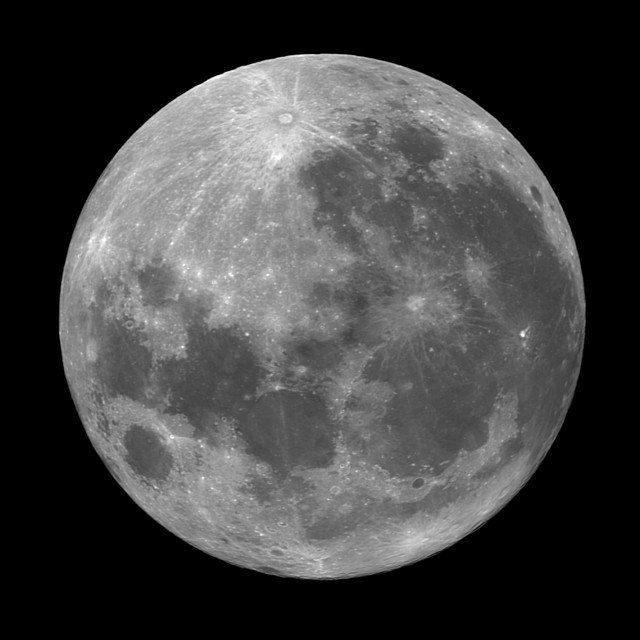
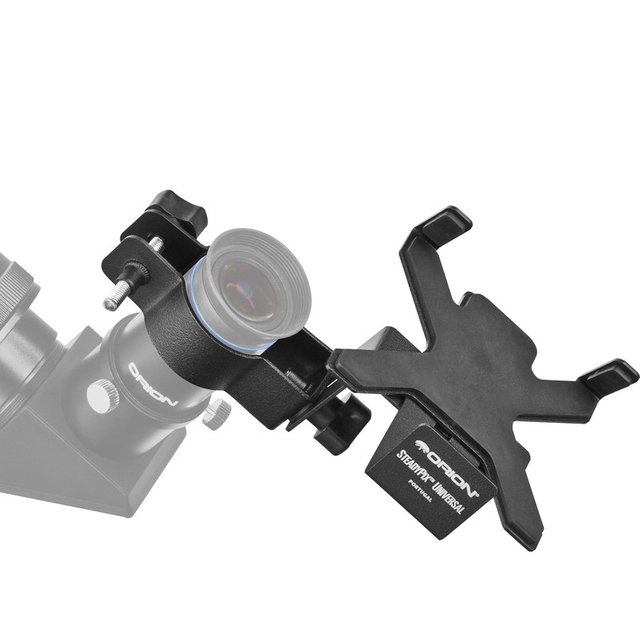
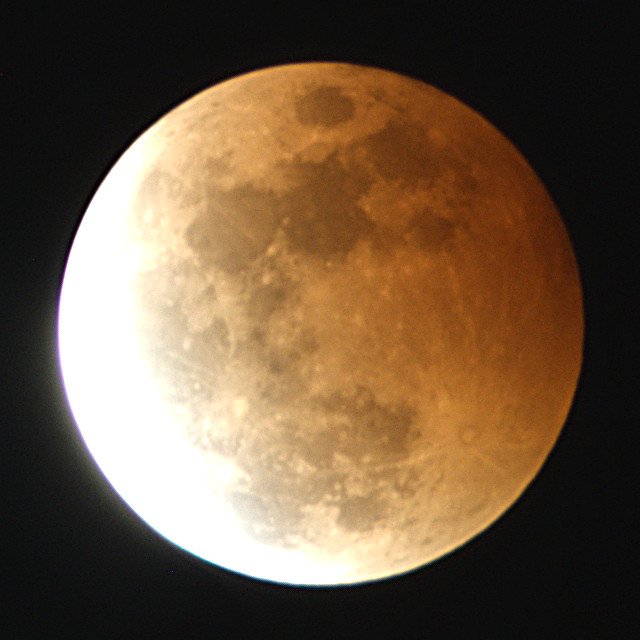
Интересные фотки.
Thank you!
Very cool photos, and you clearly know both your camera equipment and the topography of the moon. Did you take any of these photos yourself?
Correct all the moon images were taken by myself.
That's fantastic. Excellent shots!
Really very beautiful photo you share this, whether with the tool we can see the planets that are up there! Thank you for sharing your knowledge and new innovations to all parties.
Great post! I also tried to photograph the moon on new year and this is one of the shots: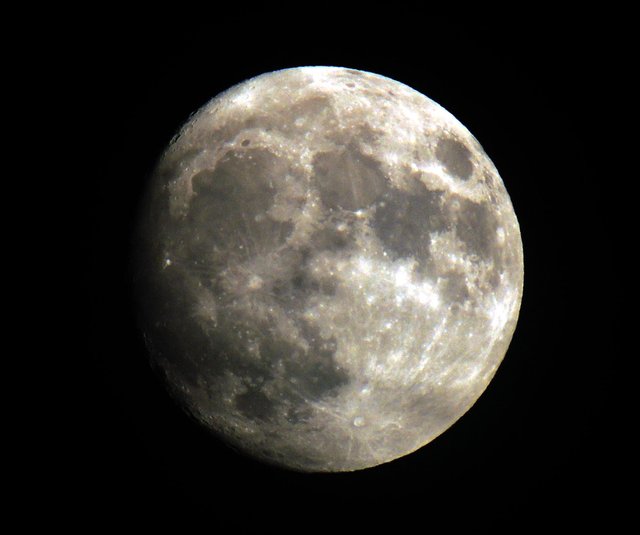
I live in Europe so my view angle is different :D
This is a great result, what type of camera and lens did you use?
interesting postings very good, I like
thank you!
Such an informative and interesting post!
Great work Terry!
Many thanks, I hope to have do some posts on imaging the planets, as well as techniques for getting sharper images, etc.
I really liked your post and the pictures are fantastic! I've just bought a 102 mm refractor telescope and the first time I saw the moon through it, I was astonished! Almost as much as I am watching your pics ;-) I'm following you right now. Keep on with the good job!
Thank you, good look with your scope. We have Jupiter, Saturn and Mars starting to move back out of the morning twilight and will put on a good show mid year.
Thank you and thanks for the tip! ;)
Good piece of art !
The moon makes a great subject!
Well written post, you should consider making a follow up on photographing and tracking different much harder planets such as Uranus, Saturn etc.
Thank you, I intend to cover the tackle the subject of stacking and tracking soon. These techniques greatly improve images and a pretty easy to implement.
I'm looking forward to it, so I've followed you. Don't disappoint :D
Lovely post! Nice to see a fellow amateur astronomer here.
I am more interested in visual observations myself, but like to see astro photographs taken by others. Cheers and I hope to see more from you.
Thank you @hrj